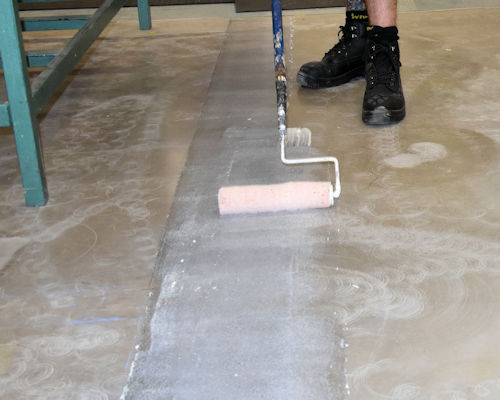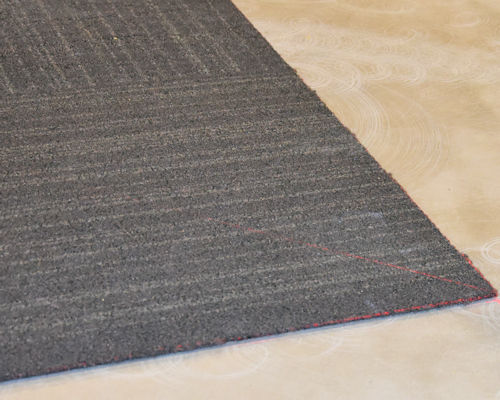Adhesives
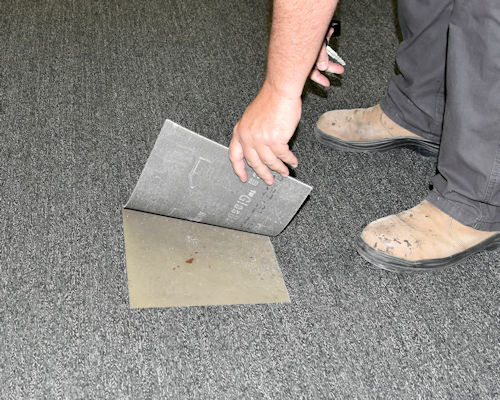 Audio for slide 1 (mp3 |6|KB)
Audio for slide 1 (mp3 |6|KB)
Most carpet tile installations use a pressure sensitive adhesive. This allows individual tiles to be pulled up and replaced easily at a later time.
However, there are times when a permanent bond is preferable, such as on ramped walkways or vertical walls.
The amount of adhesive you use will depend on the type of traffic the floor will be subjected to.
For example, you would apply more adhesive to areas that need to withstand heavy-duty traffic from wheeled items like pallet jacks, hospital beds and delivery dollies.

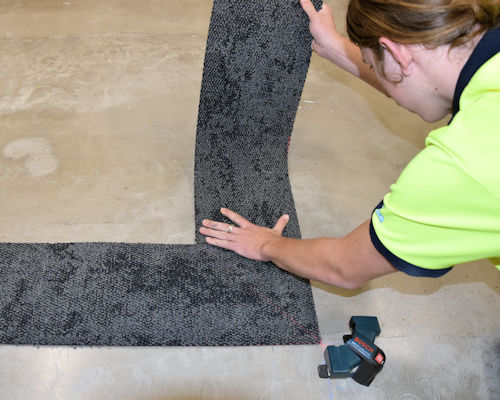 Audio for slide 2 (mp3 |6|KB)
Audio for slide 2 (mp3 |6|KB)
To achieve a releasable bond, the adhesive needs to be given time to dry, or 'tack up', before the tiles are placed in position. For a permanent bond, the tiles are placed into the semi-wet adhesive.
The set-up time depends on a range of factors, including temperature, humidity and the porosity of the substrate surface. It also depends on the chemical make-up of the adhesive itself. For more details on the properties of adhesives, see the unit: 'Adhesive fixed carpet'.

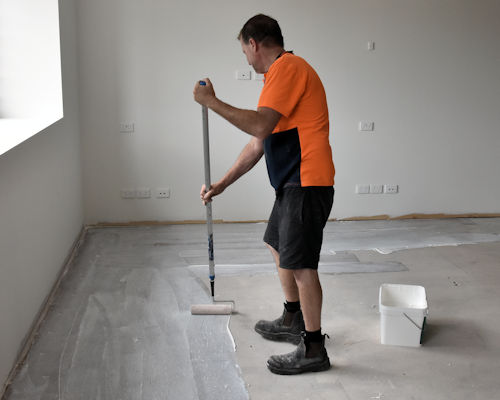 Audio for slide 4 (mp3 |6|KB)
Audio for slide 4 (mp3 |6|KB)
Spreading the adhesive
The adhesive manufacturer will specify the most suitable methods for spreading the adhesive.
This may vary depending on the size of the floor area, the type of adhesive being used and the porosity of the substrate surface.
Techniques can include:
- rolling with a long nap roller
- spraying with an airless spray gun
- spreading with a U shaped or V shaped trowel.

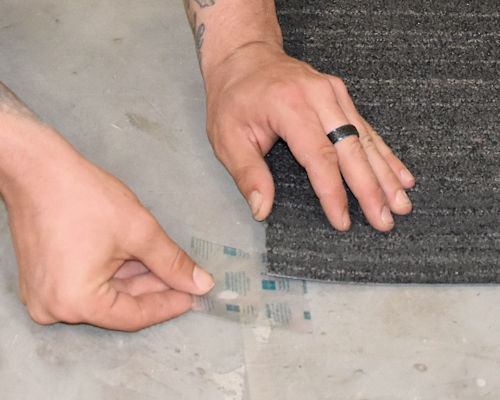 Audio for slide 6 (mp3 |6|KB)
Audio for slide 6 (mp3 |6|KB)
Other systems
There are some new products on the market that do away with the need for a liquid adhesive and instead use other methods for fixing the tiles in place.
One example is TacTiles connectors, made by Interface (shown in the photo at right), which create a 'floating floor' by joining the tiles to each other with adhesive squares.
Another example is LokDots, made by Shaw Contract, which comprise pressure sensitive dots that are applied to the underside of the tile with a hand-held applicator.


Learning activity
Audio 7 (mp3 |6|KB)Choose one full-spread pressure sensitive adhesive and one other product used for securing carpet tiles. Provide the following details for each adhesive system:
- brand name and manufacturer
- type of adhesive (in terms of its chemical composition)
- recommended installation method
- tack-up time (where applicable).






